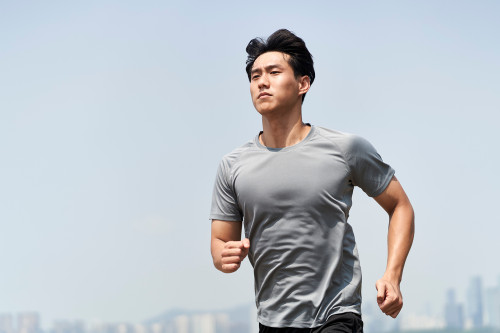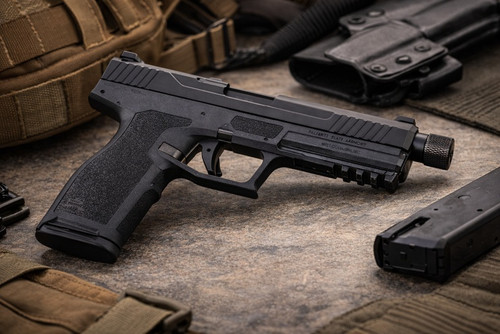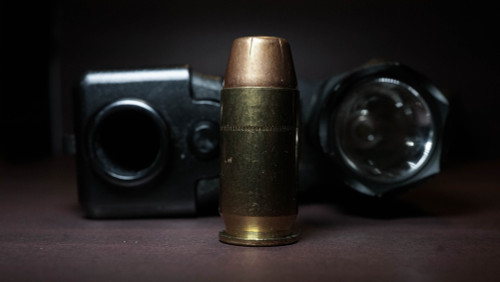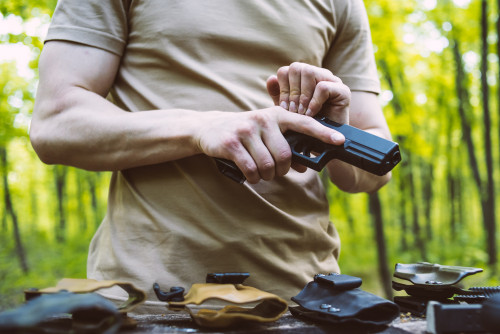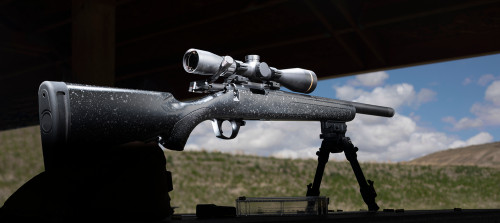At ProArmory, we’re huge advocates for training with your weapon. As much as we love guns, the truth is, your body is the thing that operates the weapon. One of the best ways you can train it is by improving your cardio with running and jogging.
Of course, you don’t want to leave yourself defenseless while you’re out jogging. That’s why many gun owners choose to carry a concealed weapon when they’re getting a bit of cardio.
But you can’t just tuck a Desert Eagle into the waistband of your basketball shorts and head out for a run. Even a standard 9mm might be a challenge without the right gear. Also, how do you avoid “printing” (showing its presence through clothing) when those gym shorts already show it all?
To effectively carry concealed while jogging, you’ll need to plan properly, get the right gear, and try out a few carry techniques. Not sure where to start? Don’t sweat it — here are the pro tips you need.
Understanding Concealed Carry
Simply put, concealed carry is the practice of carrying a weapon hidden from sight. This involves using a special type of holster to hold your gun snugly beneath your clothes.
Carrying a concealed gun is a big responsibility. If you’re going to go around concealed carrying, you need to train. Be sure to practice with your gun regularly — remember marksmanship is a perishable skill. Training will also enhance your situational awareness so you know when it’s time to actually draw your gun — and more importantly, when it isn’t.
Depending on where you live, concealed carry laws can differ drastically. In some states (like Florida) you don’t need a license to carry a concealed weapon. Just holster your gun, tuck it under your shirt, and you’re good to go.
But in another state like Massachusetts, all bets are off. In Mass, you need a concealed carry permit to tote around a hidden weapon. Check to see how your state and local laws apply. Jogging without that permit would be a really stupid reason to end up in jail.
Safety Precautions Before Jogging
Before you even consider carrying a gun while jogging, learn the four cardinal rules of gun safety. They are:
- Treat all guns as if they were loaded.
- Don’t point the muzzle at anything you don’t intend to destroy.
- Be aware of your target and what is behind it.
- Keep your finger off of the trigger until ready to fire.
Anyone carrying a concealed gun will also need to pay close attention to the condition of their weapon. More than any other firearm, keep your concealed carry gun spotless.
That means every time you put a round through your concealed carry firearm, you need to clean it. A jammed gun can have dire consequences. When a range gun jams, you need to clear the malfunction quickly and get back to shooting.
(Source: https://www.pistolwear.com/blog/is-a-belly-band-holster-a-good-choice/)
Clothing and Gear Selection
If you’re already experienced in carrying a concealed weapon, you might think your EDC holster will work for jogging. But after you try this the first time, you’ll likely change your mind.
For a concealed carry holster to function properly, you need a sturdy belt. But you don’t typically wear one when you go out for a run. Athletic clothes are designed to be loose, flexible, and breathable — all factors that are anathema to a concealed carry holster.
So, you’ll want to pick up some gear made specifically for carrying a gun while running. Here are some recommendations.
First: Your Gun of Choice
Your firearm of choice is the most important decision around carrying a concealed weapon. If your gun is too big and heavy, it will restrict your movement. Big guns can also contribute to printing.
But your gun needs to be substantial enough to fit comfortably in your hands. If you have bigger hands, you might need a bigger gun.
Finally, you don’t want a concealed carry gun with a manual safety. If you’re in a high-stress situation, make shooting as simple as possible. Guns without manual safeties allow you to just point and shoot.
Stick to compact- and subcompact-sized guns for concealed carry weapons. The Sig P365, Glock 43, Glock 19, and Smith & Wesson M&P Shield lines are all great choices.
Belly Band Holsters
Whether you’re a man, woman, neither, or both, belly band holsters are the gold standard for concealed carry while jogging. Like other athletic gear, they’re built to be light, breathable, and disappear easily beneath workout clothes.
Belly bands also work with many types of firearms. That’s a welcome change from 99% of holsters (concealed carry or otherwise), built for your specific firearm, which can be a nightmare to customize if you want to add an optic or light to your gun.
Chest Rigs
When it comes to concealed carry while jogging, chest rigs are actually preferable to things like fanny packs. Chest rigs allow you to keep the weight off your hips while not harming your form in the process. If you’re carrying a gun on one side or the other, frequent running or jogging can damage your body because you have extra weight on one side.
Because of this, carrying with a chest rig is perhaps the ultimate carry method for jogging. By placing the weight of the gun in the center of your body, you won’t damage your body over time or hurt your form. If you’re looking for an example, Hill People Gear has some great options for chest rigs.
Gear Considerations
Regardless of what holster/carry gear you settle on, make sure it has two features:
- It should completely cover the trigger guard of your firearm.
- It should securely hold your gun in place.
Without these features, your gear could make your situation more dangerous.
Clothing Options
When you’re running with a concealed gun, discretion is paramount. You don’t want to wear clothes that reveal your weapon. Instead, choose looser-fitting clothes. Consider running with a t-shirt and basketball shorts to effectively hide your gun. While this outfit may not show off the toned body you got from all that running, it’ll usually hide the fact that you’re packing heat.
(Source: https://www.womensoutdoornews.com/2018/09/running-with-a-gun/)
Tips and Techniques for Jogging and Concealed Carry
Now, let’s look at a few best practices that will make your concealed carry experience much better when jogging.
Bring Your Permit
Depending on where you live, you may need to bring your concealed carry permit when jogging. With one in hand, you’ll have a much more pleasant interaction dealing with the police after a self-defense situation.
Practice Your Draw
One critical technique many people overlook when jogging with a concealed carry gun is actually drawing their firearm. Drawing a gun from any holster takes practice. Fatigue and adrenaline can also impact your draw if you need to use your gun on a jog. Practice drawing your gun from your holster so it becomes a muscle memory.
Be Aware of Pressure Points
Carrying a concealed weapon doesn’t have to be uncomfortable. If your gun is pressing or pinching you, you may want to change how you wear it.
Two common pressure points that concealed carry weapons can irritate are your pelvic bone and hip bone. If you’re carrying a gun that’s too small, the grip can pull away from your body and push the muzzle into your pelvic bone. A gun carried too far to the side can dig into your hip.
If you’re feeling discomfort in these areas, try changing the positioning of your gun. If that’s not possible, you may need a different holster or gun.
Mental Preparedness and Situational Awareness
Situational awareness is the most important aspect of concealed carry — both in jogging and in general. If you don’t identify a threat with enough time to react, your gun isn’t going to do you much good. Be sure to remain alert to your surroundings, and identify potential threats from a safe distance.
Maximizing situational awareness requires using your ears as well as your eyes. Don’t run with a concealed carry gun while wearing earbuds. Your favorite tracks might help get you “in the zone,” but they also make it nearly impossible to identify threats until they’re right on top of you. Save the tunes for post-workout.
Maintaining situational awareness while jogging is easier said than done. Exercise alone can take up a lot of your focus but the more you practice, the easier it will get.
Effects of Sweat on Guns
Unless you’re Prince Andrew, you probably sweat while running. But sweat can wreak havoc on a firearm. While concealed carry holsters are designed to keep sweat away from your firearm, they can’t guarantee total protection from corrosion.
Sweat contains lactic acid, ammonia, salts, and urea, all of which can corrode your gun. Fortunately, if you clean your gun regularly, you’ll prevent rust. If you sweat a lot, give your gun a quick wipedown with a rag and gun oil after each run.
Final Thoughts
Carrying a concealed weapon while jogging is a great way to maintain your personal safety while getting some exercise. But without the right training, equipment, and ammo, you could actually make your daily runs less safe. Follow this guide and practice key techniques with your firearm, and you can jog with confidence with your heater tucked in your waist.
But in order to practice, you’ll need to feed your gun. At ProArmory, we offer quality ammo and accessories that you can afford.
Stay stocked up for with bulk ammo, extra mags, and gear that will better hide your gun while jogging. Browse our selection of handgun ammo today.
Want to learn more about handgun safety and tactical techniques? Sign up for our newsletter to be notified when our training officially launches. We can help you train with your firearm, and provide the best ammo for practice sessions at your local range. To learn more, explore our training and ammo options.



